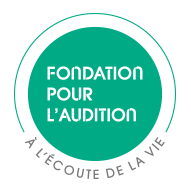COUDERT Paul
Project status: closed
Paul Coudert is carrying out his master studentship in the Signal and Image Processing Laboratory (LTSI) in Rennes under the supervision of Prof. Benoît Godey. His project aims to understand, through imaging, how the auditory area of the brain is activated by electro-acoustic implants. He hopes this will improve care for patients with profound hearing loss.
Hearing rehabilitation in patients with profound hearing loss involves cochlear implants. Sensory cell impairment is overcome by electrodes surgically inserted into the cochlea, the sensory organ for hearing in the inner ear. This device transforms sound to electrically stimulate the auditory nerve, which sends the information received to the brain. Recently, electro-acoustic implants have been developed for patients who have residual hearing but not enough to understand speech well. These implants use dual (or bimodal) electro-acoustic stimulation: acoustic stimulation of the auditory nerve by an amplifier to transmit residual sound and electrical stimulation by a cochlear implant to electrically transmit the patient's impaired sound frequencies. “Studies have shown the benefits of these electro-acoustic implants for patients, particularly a more natural listening sensation and improved comprehension in noise,” says Paul Coudert, ENT resident at Rennes University Hospital. “But to date, no research has been conducted to understand what happens in the brain during this bimodal stimulation, nor what the differences are with a classic implant. I would like to answer these questions.”“I’m honored to benefit from the prestigious support of Fondation Pour l’Audition, which supports important research for the advancement of knowledge and for the benefits of patients. This fellowship allows me to lay the groundwork for my intended teaching hospital career.”
The image of sounds
The young doctor's objective is to develop an experimental protocol in animals using magnetic resonance imaging (MRI) to visualize brain activity in real time as the electro-acoustic implant processes sound. “We chose the mini pig because of the great anatomical similarity between its ears and brain and ours.” The first step will be to develop the imaging technique. “Then I will optimize the surgical technique for inserting the electro-acoustic implant. This is a delicate step, because the device must not interfere with the MRI afterwards. Finally, we will be able to proceed with the actual study and compare the differences between acoustic, electrical and bimodal brain activation.” Knowledge of the cerebral mechanisms at work should eventually improve implantation for patients with hearing loss. Paul Coudert adds, “This model could also be useful for conducting other studies.”
Doctor Paul Coudert
ENT resident at Rennes University Hospital
Inserm Laboratory 1099 (Signal and Image Processing Laboratory – LTSI) in Rennes, France
